Nourishing Goat Milk Soap Recipe
This cold process bar combines goats milk with shea butter, olive oil, and more. A gentle, cleansing, beautiful soap recipe.
Equipment
Ingredients
- 3 ounces almond oil
- 2 ounces castor oil
- 10 ounces coconut oil
- 10 ounces olive oil
- 6 ounces palm oil
- 3 ounces shea butter
- 1 ounce beeswax
- 4.91 ounces lye sodium hydroxide
- 12 ounces goat milk (or combine 1 ounce powdered goat milk and 11 ounces water)
Instructions
- Freeze milk. Prepare the goat milk by freezing for a few hours until it reaches a slushy consistency.
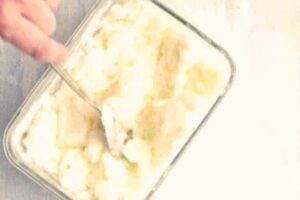
- Add lye. Add the lye to the partially frozen milk and stir until completely blended. It will melt, heat up, and may change color. Set aside in a safe place.
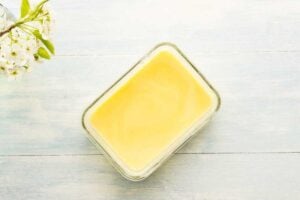
- Measure and melt oils. Measure the oils, butters, and beeswax and melt over low heat until completely melted and heated to 140 degrees. Set aside.
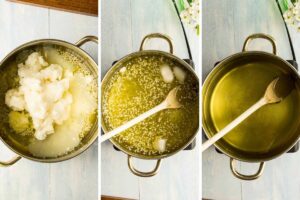
- Let both components cool. Let your lye solution and melted oils (still in their separate containers) cool to about 110 degrees. Meanwhile, prepare you mold, tools, and any fragrances or colors you're using.
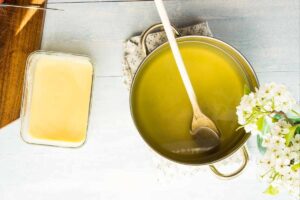
- Blend to trace. When the milk and oils have cooled to about 110 degrees, pour the milk into the melted oils and blend using a stick blender. Mix until "trace" is achieved, or the soap thickens slightly and a trail of soap rests on top of the batter rather than immediately sinking in. Add desired fragrance or color, stirring in by hand.
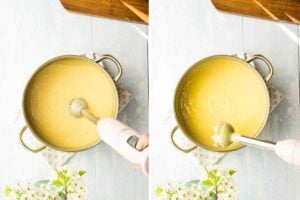
- Pour into mold. Pour into soap mold, gently smoothing out top. Place in fridge or freezer to avoid cracking. Un-mold after 24 hours, cut into bars, and allow to cure for 2 weeks before using.
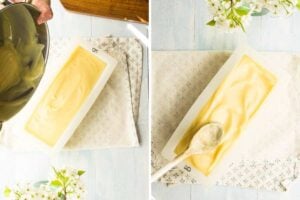
- Unmold. Release the soap from the mold, and cut into bars. Let cure in a place with good air circulation for 2 weeks beforeusing.
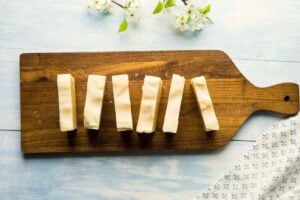
Notes
To resize this recipe, enter the following percentages into a soap calculator: 8.57% almond oil, 5.71% castor oil, 28.57% coconut oil, 28.57% olive oil, 17.14% palm oil, 8.57% shea butter, 2.86% beeswax. (You will need to recalculate the lye.)
Be sure to follow safe soap making: wear gloves, googles. long sleeves. and work in a well-ventilated space. Take care that any raw soap or lye stays out of the reach of children.
Servings: 10 bars